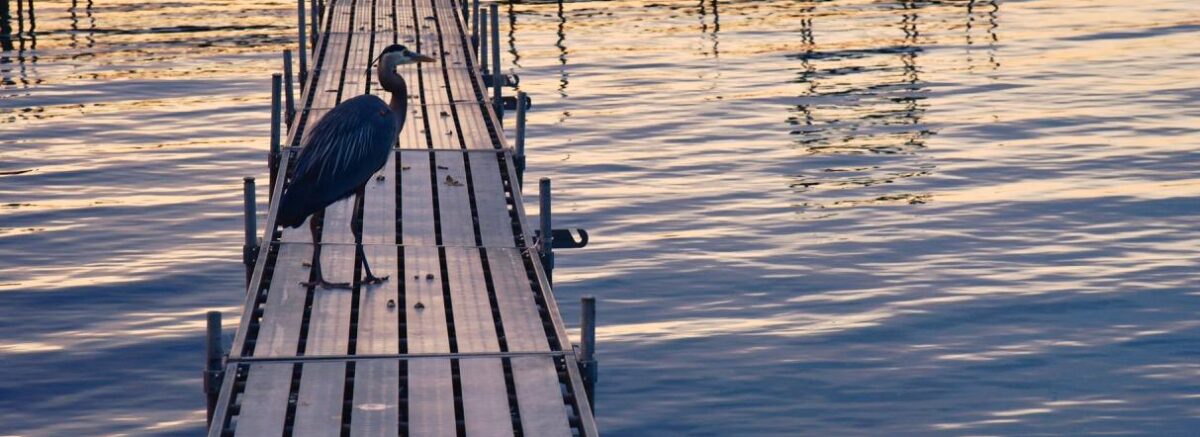| There is a lot of misinformation in circulation concerning how best to maintain Chautauqua Lake. Our advice is to think critically about what you’re hearing and search out the facts from verified sources. Please note the footnotes that appear at the end of this article which document our sources. The following four examples illustrate how misinformation is impeding effective management of Chautauqua Lake in order to ensure that it remains healthy, safe, and navigable while retaining its Class A drinking water status, world-class fishery rating and contact recreation usability. Misconception #1: Herbicide treatments reduce plant growth and the harmful algal blooms that occur in the lake. While herbicide treatments certainly eradicate plant growth temporarily, longer-term plant regrowth along with corresponding follow-up treatment costs must be kept in mind.The fact is that when the 2019 herbicide treatments bared extensive sections of the lake’s south basin (1), these barren areas, stripped of virtually all plant species, offered the perfect ground for the release of nutrients from the sediments into the water setting the stage for an invasion of new plant growth (2a, 2b). In late August of 2021, these same areas contained extensive beds of native elodea and water star grass, intermixed with some invasive Eurasian watermilfoil and very few other native plant species. Elodea is tenacious, thriving in the soft sediment and nutrient-rich water, with little competition. A mere two years after herbicide treatment, Burtis Bay’s aquatic plant community has changed so that it now hosts fewer native species (lower biodiversity) which are growing aggressively. Currently, evidence indicates the non-native milfoil is being controlled by weevils, a native insect that serve as biocontrol. The two native species require harvesting because state herbicide strategies concentrate on invasive species. Interestingly, the sections of Burtis Bay with healthy, growing plants currently have clearer water (3). Algal and cyanobacteria blooms are not nearly as predictable as are plants. In 2019, a south basin-wide algal bloom proliferated about two weeks earlier than it had the year before and lingered well into the fall. In 2020 and 2021, algal blooms, including harmful algal blooms, continued (4). Most herbicide chemicals are not formulated to treat algae (5). Rather, a well-known disadvantage of herbicide use is that the nutrients in the treated, decaying plant material remain in the water column and/or are taken up by bottom sediments (6). Additional water-column nutrients are then available to fuel algal blooms (7). When nearly all existing plants are removed in an area, as in 2019, sediment nutrients can be recirculated by wave action and also fuel algal blooms (8). The reasons for some of the blooms turning toxic continues to be researched. Misconception # 2: Herbicides are selective for invasive plants only. The truth is that herbicides kill far more vegetation than they are intended to target.Applying chemicals in Chautauqua Lake is a tenuous endeavor because the targeted non-native plants are intermingled with beneficial native plants; it is not possible to precisely treat only non-native plants given the lake’s dynamic water movements which are driven by wind and waves (9). Every herbicide used in Chautauqua Lake kills native plants: 2,4-D impacts water star grass, coontail and water lilies; Endothall impacts coontail, Najas species and most of the pondweed species; ProcellaCOR impacts Coontail (10).Pondweeds provide important fishery habitat and prevent aggressive plants from spreading. Coontail is a super-performing plant which provides habitat and food for insects, fish and waterfowl, and it is also intentionally used in designed coontail areas by lake managers due to its exceptional capacity to draw nutrients from the water and inhibit algal growth (11). The collateral damage done by herbicides to native plant life in turn reduces and threatens places where fish live, hide, and spawn, impacts the food web for the osprey, eagles and tundra swans and other wildlife and can contribute to the conditions that support Harmful Algal Blooms (12). Misconception #3: Herbicides will restore the lake to previous conditions. Some believe that Chautauqua Lake’s appearance will become more aesthetically appealing in response to herbicide treatments, and that the more herbicides are used, the better it will look. The condition of the lake is not evaluated by how it looks, but rather by its nutrient levels and its diversity of life (13).Lake restoration is a concept that originated in the United States about 20 years ago; it began as a response to “pollution,” focusing on excessive nutrients and ways to reduce nutrient loading (14). Herbicide treatments do not reduce nutrient levels, but they have reduced the biodiversity of Chautauqua Lake’s plant life. The reduction of nutrients flowing into and recirculating in the lake IS exactly what the lake needs. Herbicide treatments cannot reduce nutrients entering the water column. Misconception #4: Herbicides are affordable and will address aquatic plant management needs. The total cost of the herbicide treatment program from 2017 to the present incurred by multiple agencies is unknown. The transparency of the full cost of the herbicide program should be provided to the community along with the actual areas treated to show how much of the lake received treatment and at what cost. The agencies who have incurred these expenses include not-for-profit organizations and municipalities. To perpetually invest limited dollars in herbicide treatments that harm native plant communities but do not reduce nutrient levels is not an effective lake management strategy (15). Furthermore, herbicides are not permitted in most parts of the lake, yet the surface, near-shore areas will always need maintenance (16). Existing harvesting strategies are cost-effective and can be used lake-wide. Harvesting removes large quantities of nutrients, keeps the surface waters usable, and does not lower plant biodiversity, thus maintaining fish and wildlife habitat (17). Please keep these points in mind as you encounter information about the lake and consider the most prudent path forward. Being informed and discerning citizens will help to ensure a healthier, safer, and more sustainable future for Chautauqua Lake. References 1. Johnson, R.L. et al. 2019 Status of Chautauqua Lake’s Aquatic Macrophyte Community Determined by a Late Summer/Early Fall Survey. Racine-Johnson Aquatic Ecologists. December, 2019. 2a. Scheffer, M. et al. Catastrophic shifts in ecosystems. Nature, October 11, 2001 413: 591-596; 2b. Carpenter, S.R. and D.M. Lodge. Effects of Submerged Macrophytes on Ecosystem Processes. Aquatic Botany, 1986 26: 341-370. 3. Johnson, R.L. Macrophyte and Macroinvertebrate Surveys, August, 2021. 4. Boyer, G. Chautauqua Lake Field Season 2019 Final Report. SUNY College of Environmental Science and Forestry. January 28, 2020. Boyer, G. Cyanobacteria identification and toxin reports. SUNY ESF 2020 and 2021. 5. NYSFOLA. 2009. Diet for a Small Lake: The Expanded Guide to New York State Lake and Watershed Management. New York State Federation of Lake Associations, Inc. 6. NYSFOLA. 2009. Diet for a Small Lake: The Expanded Guide to New York State Lake and Watershed Management. New York State Federation of Lake Associations, Inc. 7. NYSDEC. 2018. Harmful Algal Bloom Action Plan Chautauqua Lake 8. Jackson, L. Macrophyte-Dominated and Turbid States of Shallow Lakes: Evidence from Alberta Lakes. Ecosystems June, 2003 6(3): 213-223. 9. Chautauqua County Planning Department. Chautauqua Lake Macrophyte Management Strategy. March, 2017 10. Navigate (2,4-D) label. Aquathol-K (endothall) label. ProcellaCOR label 11. Borman, S. et al. Through the Looking Glass A Field Guide to Aquatic Plants. Reinddl Printing, Inc. Merrill, WI. 1999. 12. Mikulyuk, A. et al. Is the Cure worse than the disease? Comparing the ecological effects of an invasive aquatic plant and the herbicide treatments used to control it. Facets 2020 5:353-366. 13. New York State Federation of Lakes Association, Inc. Citizens Statewide Lake Assessment Program (CSLAP) 14. Lake restoration 15. Western New York Partnership for Regional Invasive Species Management Invasive Species Tier Ranking 16. New York State Department of Environmental Conservation Pesticide Statutes, Regulations and Policies 17. NYSFOLA. 2009. Diet for a Small Lake: The Expanded Guide to New York State Lake and Watershed Management. New York State Federation of Lake Associations, Inc. Additional Resources: Bachmann, R.W. et al. Relations Between Trophic State Indicators and Plant Boimass in Florida Lakes. Hydrobiologia 470:219-234. Getsinger, K.D. et al. Changes in a Myriophyllum spicatum L. Community Following 2,4-D Treatment. Journal of Aquatic Plant Management 20:4-8 Kelly, I. et al. Whole-lake Herbicide Treatments for Eurasian Watermilfoil in Four Wisconsin Lakes: Effects on Vegetation and Water Clarity. Lake and Reservoir Management 23:83-94. Takamura, N. et al. Effects of Aquatic Macrophytes on Water Quality and Phytoplankton Communities in Shallow Lakes. Ecological Research 18:381-395. |
Don’t Believe Everything You Hear About Chautauqua Lake

